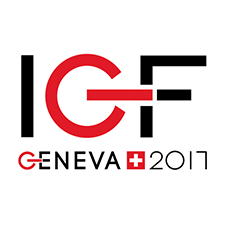Multistakeholder governance of the domain name system, lessons learned for other IG issues
19 Dec 2017 09:00h - 10:30h
Event report
[Read more session reports and live updates from the 12th Internet Governance Forum]
The Internet Assigned Numbers Authority (IANA) transition has been the best example of a multistakeholder policy negotiation with a concrete result. It is yet to be seen which lessons learned from the transition could be transposed to other Internet governance issues, and other areas of governance.
Opening the session, Mr Markus Kummer, Independent Internet Governance and Policy Consultant, posed a few third-party questions for discussion, including an explanation of how the Domain Name System (DNS) is governed in a multistakeholder manner.
Mr Keith Drazek, VP of Policy & Government Relations at Verisign, gave an overview of the multistakeholder structure of the Internet Corporation for Assigned Names and Numbers (ICANNs), namely the work of the Country Code Names Supporting Organization (ccNSO) and the Generic Names Supporting Organization (GNSO) , policy-making bodies focused on the domain name space. In reference to the IANA transition, Drazek explained that a key outcome was the breakdown of silos within ICANN, improved understanding of the work of the various ICANN constituencies, and the development of relationships across the Internet community.
Mr Larry Strickling, Technology Policy Expert, explained that the US government was the catalyst for the multistakeholder community to take the lead in the IANA transition. Strickling attributed the transition’s success to the availability of ICANN resources and legal representation from many parties. He affirmed that the transition depended on the work of stakeholders from various segments of the Internet community, and expressed that the community was responsible for including the accountability aspect of the transition to complement the technical plan. One year after the transition’s success, he itemised its basic characteristics including:
- multistakeholder approach to problem solving
- stakeholder driven
- openness and transparency to build confidence in the process
- consensus-based outcomes
Mr Matthew Sears, Lead Strategist at Global Partners Digital, opined that in addition to the characteristics of the multistakeholder approach, the elements of buy-in and cooperation were necessary to ensure the approach’s success. Sears noted that ICANN is a multistakeholder environment but such understanding of multistakeholderism may not be universal. He emphasised the importance of agreed principles and procedures, and a common cause among constituents, which was evident in the IANA transition.
Ms Lori Schulman, Senior Director of Internet Policy at the International Trademark Association (INTA), highlighted the importance of compromise. Schulman warned against remained entrenched or siloed in positions without sight of the multifaceted character of a problem. She attested that implementation mechanisms are important to multistakeholder processes and relayed that the ICANN contracts were designed beforehand as part of the transition process.
Drawing from comments from participants, Kummer summarised that the compromise demonstrated in the IANA transition was enabled by the presence of a deadline. Strickling added that it was important for the community to set a deadline as a collective as opposed to an external body for the multistakeholder approach to be effective.
Commenting on the same issue of deadlines, Mr Jordan Carter, CEO at InternetNZ, added that the transition worked because of the absence of a plausible alternative process. He made the distinction between Internet governance debate and trade negotiations, where governments were unwilling to fully subject trade talks to a multistakeholder process.
Ms Arda Gerkens, President of the International Organisation of Hotlines (INHOPE), mentioned that trust in each party’s capacity to deliver was crucial. Gerkens emphasised that although politicians traditionally thought they needed to know all the answers, for the Internet they need to relinquish power and allow constituents to drive various aspects of its governance. She warned about the ambiguity of multistakeholder rhetoric; governments claim to follow multistakeholderism but enact undefined consultation processes instead.
Ms Grace Mutung’u, Associate at the Kenya ICT Action Network (KICTANet), referred to a local study of online discussion themes in Kenya and noted that most of Kenya’s input to the transition came from individuals rather than organisations. Mutung’u questioned whether all stakeholders’ inputs carried the same weight. She stated that without capacity building, stakeholders such as civil society cannot participate effectively in multistakeholder processes. She mentioned that acronym use within ICANN was not a barrier, and that the organisation provided support in many ways. She expressed the importance of organisations to address ICANN’s work as they would with climate or health issues.
Ms Lilian De Luque Bruges, Information Security Consultant, stressed the need for checks and balances in Internet governance. She said it was important to involve local voices. She highlighted the need to correlate capacity building efforts with the work of policy communities.
Mr Ayden Féderline, Representative of the Non-Commercial Stakeholders Group (NCSG) on the GNSO Council, concurred with Mutung’u regarding acronyms but suggested that the structure ICANN adopted to implement its charter may be a barrier. He emphasised that multistakeholderism was important to build participant’s trust in decision processes.
The panel discussed reconciliation between global multistakeholder processes and national (or supranational) regulations such as the General Data Protection Regulation (GDPR) and underscored awareness as a key factor to ensuring applicability and sustainability of multistakeholder outcomes. Participants and panellists agreed that multistakeholderism was essential to addressing cybersecurity.
by Kevon Swift
Related topics
Related event

